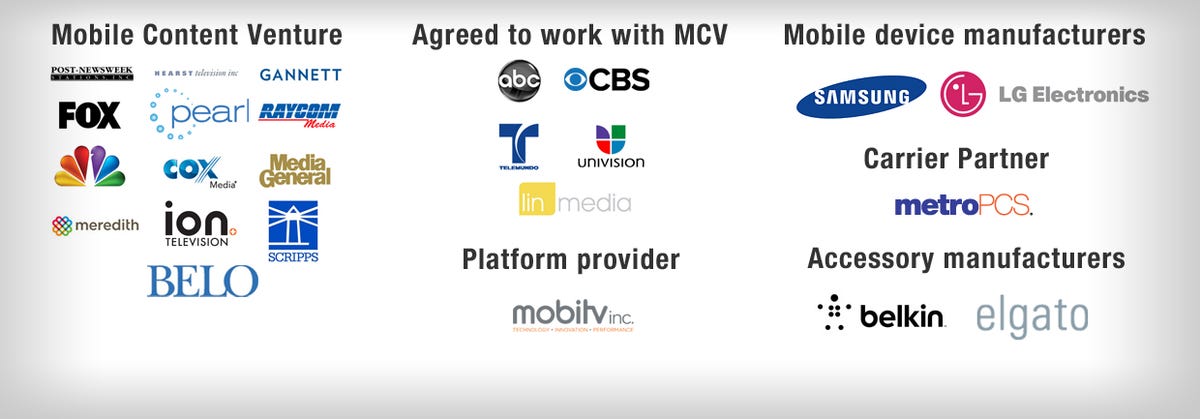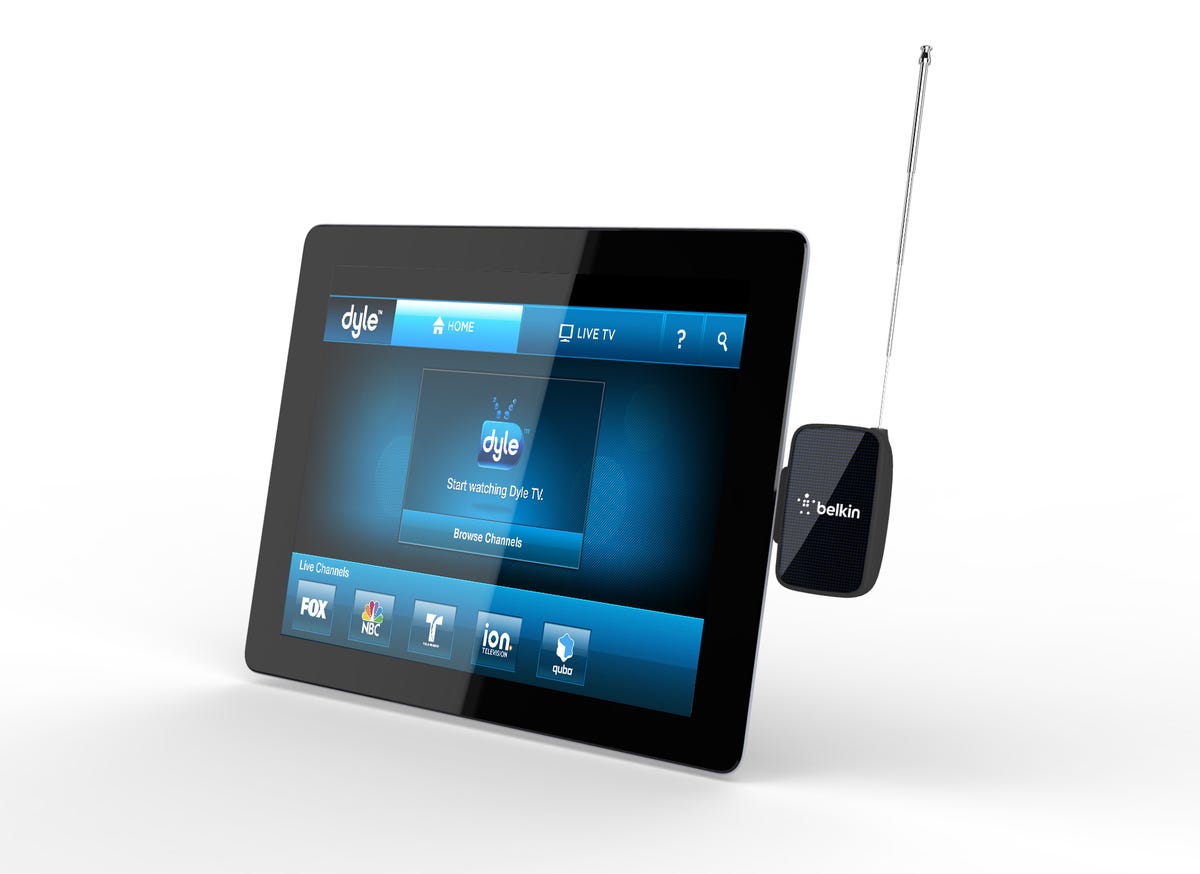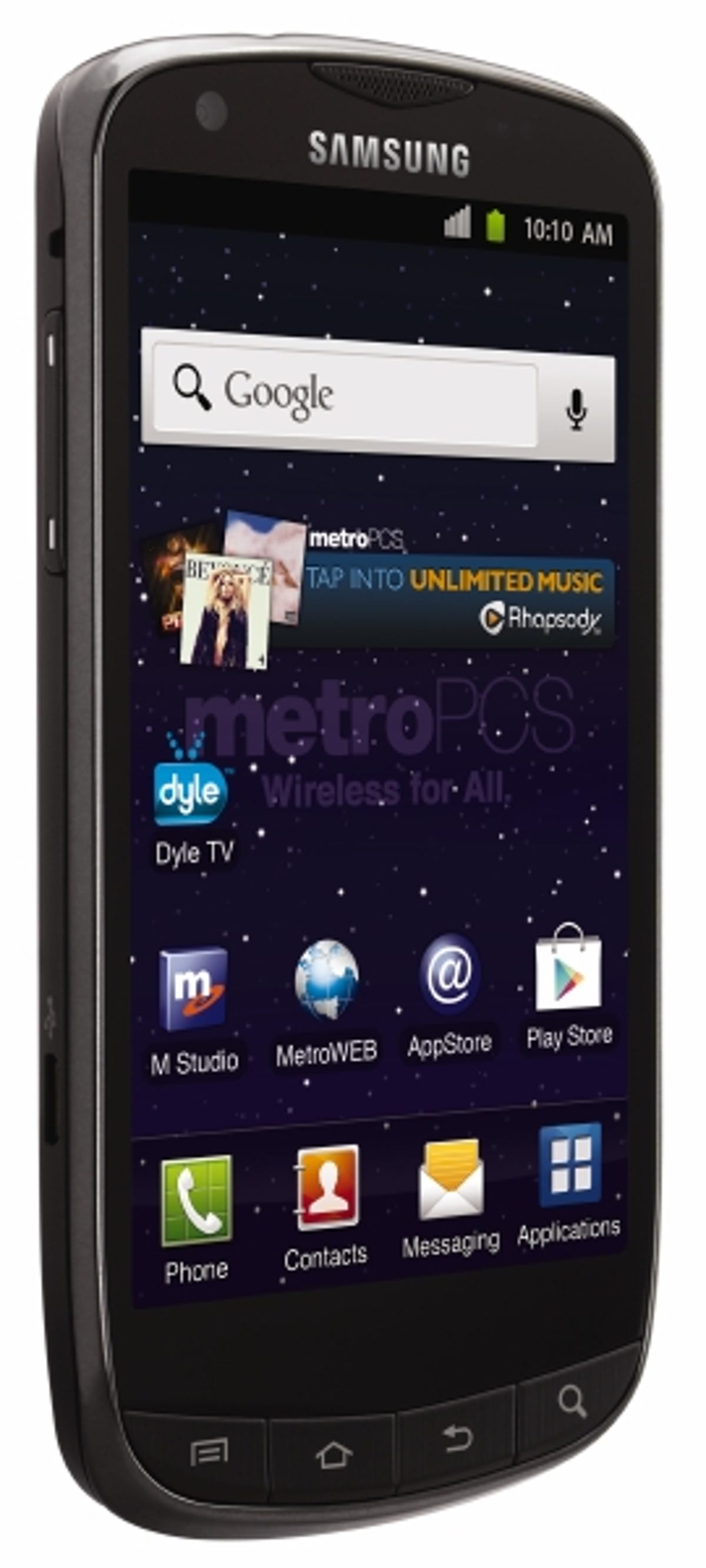A while back, when I first heard about broadcasters’ plans to build their own network to deliver local and live TV to smartphones, I have to admit I chuckled a little.


Dyle
The idea that broadcasters, with little to no experience in the wireless world, could accomplish such a feat seemed ludicrous. Equally laughable was the idea that people would tune into Judge Judy on their phones. With so many other stories floating around (at the time, the big question was: when will the iPhone come to Verizon?) it was easy to ignore the seemingly half-baked project.
But more than two years later and at a cost of around $10 million, the broadcasters, operating under an alliance called Mobile Content Venture, are on the verge of making good on their crazy, ambitious plan.
Along the way, big-name players such as NBC and Fox have picked up a cadre of allies, including handset manufacturers Samsung Electronics and LG Electronics, and regional prepaid carrier MetroPCS. Dyle will officially launch in many major markets when MetroPCS sells the first Dyle-compatible Samsung smartphone, which is expected shortly, CNET has learned. Dyle declined to comment on the specific timing of the launch.
“The big thing is, this is real,” Salil Dalvi, who in addition to running Mobile Content Venture as co-general manager also serves as senior vice president of digital distribution at NBC Universal, told CNET. “There is a real product out there.”
Still, I remain skeptical. See, MCV has this service, called Dyle — but no one has ever heard of it, and it’s launching at a time when people are increasingly viewing shows and movies on their own time. Yes, people will tune in to live sports and big breaking stories, but is that enough to justify the purchase of a new phone or pricey dongle for your tablet? History has shown that consumers haven’t exactly clamored for live TV on their mobile devices. Those challenges and shifting trends appear to be a recipe for disaster.
“The question that’s not answered is, ‘where’s the pent-up demand for this?'” said Michael McGuire, an analyst for research firm Gartner.
But I have to give it to Dalvi and fellow co-general manager Erik Moreno, who is also the senior vice president of corporate development for Fox Networks, for their enthusiasm about the service. Despite juggling multiple responsibilities, they are committed to seeing this through. I want them to succeed, even if they could very well fail.


Josh Long/CNET
MCV who?
Back in 2010, MCV was merely a promise made by several broadcasters. Along with NBC and Fox, MCV is joined by Ion, Belo, Cox Media, E.W. Scripps, Gannett Broadcasting, Hearst, Media General, Meredith, Post-Newsweek Stations, and Raycom Media. Other major broadcasters ABC, CBS Television, LIN Media, Telemundo, and Univision have agreed to light up their stations as well. (CNET is a unit of CBS.) In total, 92 stations have agreed to work with MCV.
The venture planned to use a standard called ATSC-M/H (stands for Advanced Television Systems Committee – Mobile/Handheld), an open broadcast system specifically designed for mobile devices. The idea was that this separate network would broadcast local stations to mobile devices.
That sounded eerily like Qualcomm’s own MediaFlo service, which offered live TV services to cell phones with the right chip and antennas right around the same time. MediaFlo was a favorite project of CEO Paul Jacobs, whose eyes would light up every time he demonstrated the service to me. Given Qualcomm’s heft in the mobile world, and the backing of AT&T and Verizon Wireless, it had to be taken seriously, and commanded more of my attention than the broadcasters’ little project.
As with MCV now, I was as skeptical about MediaFlo back then. Only select handsets, and not exactly the sexiest choices, featured the pull-out antennas necessary to pick up the feed. Verizon Wireless and AT&T both charged a fee on top of the normal phone plans in order to access the service. A lot of the shows were blacked out because Qualcomm couldn’t secure the necessary rights from the very broadcasters that are launching the service now.
Most importantly, the niche technology meant Qualcomm couldn’t get it into a lot of devices, a dilemma that MCV faces today.
“The biggest challenge they have to overcome is something we ourselves weren’t able to do,” said Neville Meijers, vice president of business development for Qualcomm. “It’s going to be a real struggle.”
It’s no surprise that Qualcomm suspended new sales of MediaFlo devices in October 2010 and killed the service the following March, a failure that have left many skeptical over whether mobile live TV is actually something that people want.
Just four months later, MCV came up with the Dyle brand, meant to be “fun and entertaining brand personality” with a nod to the old-fashioned television dial. I didn’t even blink as the announcement came out and faded into the ether.
Treasure trove of spectrum
MCV resurfaced on my radar last year not because of any interest in mobile live TV, but because of the valuable airwaves that the broadcasters were sitting on, spectrum that the wireless industry is angling to get its hands on for itself. While spectrum isn’t the most attention-grabbing subject out there, it’s important because its scarcity determines how carriers charge everyone for all of their services.
The wireless industry, MCV argues, can benefit from a second network that runs parallel to the cellular one. Consumers who watch television through Dyle don’t consume data from their plans, an increasingly big concern with more restrictions on data use. In its own way, MCV believes it can alleviate the growing traffic congestion on the mobile highways.
Related stories
- MetroPCS to offer live local TV on its smartphones
li> - Apple TV quietly gets Hulu Plus app
- Apple’s plan to dominate all the screens in your home
“If you want to deliver video efficiently with anything incredibly popular, you’d want a broadcast network,” Moreno told CNET.
But that spectrum, the wireless industry argues, would be better put to use on the networks of the carriers, which already offered established services to hundreds of millions of customers.
“Broadcasters are selling this as a way to solve spectrum challenges,” said Jot Carpenter, CTIA’s vice president of government affairs, in a recent interview with CNET. “We think there’s a lot of broadcast spectrum that lies fallow and can be put to better use.”
Over the next few years, the Federal Communications Commission will hold what’s known as an “incentive auction,” in which the broadcasters can choose to sell back their spectrum in an auction for wireless carriers. Smaller broadcasters with fewer viewers could break away from the alliance and sell back the spectrum.
As a proponent of wireless issues, Carpenter is unsurprisingly a big skeptic of Dyle.
“You can paint me firmly in the ‘I’ll-believe-it-when-I-see-it camp,'” he said. “There’s been a lot of talk about mobile TV. I haven’t seen broadcaster talk translate into a market offering.”
Finally, a debut at CES
Dyle, however, made some headway at the Consumer Electronics Show. The company showed off the first Dyle-compatible phone, an Android smartphone that would run on MetroPCS’s network.
In addition, accessory maker Belkin showed off a prototype unit of a dongle that would plug into iOS devices such as the iPhone and iPad, and allow them to pick up local TV signals.


Belkin
“The aspect of MCV that is so compelling is they are building a sustainable ecosystem,” said Gavin Throckmorton, staff vice president of product management at MetroPCS, on why the carrier took a chance on the service.
The service will pick up four or five local channels, or possibly more, depending on the market you’re in.
MobiTV CEO Charlie Nooney also added his support: “The fact is there are a lot of naysayers about live. Simply because they’re outside their home doesn’t mean they don’t want the same programming.”
Get live TV via these upcoming mobile devices (pictures)






+4 more
Of course, Nooney is going to be supportive, since his company offers mobile video services — both live and on-demand, and powers the services and video platform for Dyle. MetroPCS, meanwhile, is taking a flyer on something new in an effort to stand out from its rivals and reverse its slowing customer growth.
Even writing up the MetroPCS announcement, I couldn’t find time to meet with Dyle personally, having made the usual mistake of cramming too many meetings at the gigantic trade show. Doubt also lingered in my mind: how serious should I be taking this service?
Dyle a reality soon
Apparently, I should be taking it a bit more seriously now, hence this piece. Following the announcement of the Samsung phone at CES, LG showed off a prototype Dyle smartphone at the National Association of Broadcasters show in April. In addition to Belkin, accessory maker Elgato plans on making its own iOS dongles, with plans for an Android one coming next year.
A recent study — conducted by Research Now, but commissioned by Dyle — indicates consumers may be more interested in live TV than previously thought.
The 510-person survey found that 61 percent of consumers would be somewhat or very likely to switch cell phone providers to get access to mobile TV. Even more — 68 percent — said they would watch more live TV if it were available on their mobile device. The study found that consumers wanted to get their local news and weather from mobile TV even if the content is readily available online.
Despite its partners, MCV’s stewards acknowledge there remain a lot of challenges.
“What we’re trying to do is break a seemingly unbreakable chicken-and-an-egg problem,” Moreno said.


Samsung
The dilemma that Moreno is referring to is the challenge that any wholly new service faces at launch. Most of the handset manufacturers and wireless carriers won’t pay attention to Dyle unless it starts to see critical mass with consumers. But it’s difficult to get customers to notice most mobile services without the marketing heft of those same handset manufacturers and wireless carriers.
As a hook, Dyle will be free to anyone with a compatible phone or dongle. The venture is focusing on driving adoption, and would look to different business models if it reaches critical mass.
MCV won’t have the support from the big players. Initially, its only carrier partner is MetroPCS, which has a base of 9.3 million customers, or about a tenth of the customers at AT&T or Verizon Wireless.
In addition, the initial products aren’t going to be pretty. The first set of products, including the Samsung smartphone for MetroPCS, will require annoying pull-out antennas that doomed the first wave of MediaFlo products.
Moreno and Dalvi are more excited about the dongles, which take advantage of the explosive growth of the iPad and the increasing tendency to watch movies and other programs on them. They believe that tablets are the best way around the stranglehold that the carriers have over the industry.
But even then, the venture risks falling into the same pricing trap as Qualcomm. The early devices won’t be cheap. Belkin said its dongle will be less than $150, but wouldn’t give a specific price. Elgato will sell a U.S. equivalent of a dongle it sells in Europe, which costs between 80 euros and 100 euros (about $98 and $122, respectively). These aren’t the kind of prices that are going to lure in consumers, even if they are interested in turning their iPad into a second, portable television.
Nate Kraft, director of product development for Belkin, acknowledged the price range means this isn’t a mass-market product, but said that during the initial launch, the early adopters who would be interested in Dyle are paying less attention to the price, and more to the quality of the service.
Indeed, most of the companies I talk to, from platform provider MobiTV to Dyle itself, are taking a long-haul approach the service.
“We’re not even in the first inning of the game. We’ve just been warming up,” Moreno said.
While I still have my doubts about Dyle, I’m no longer laughing.



